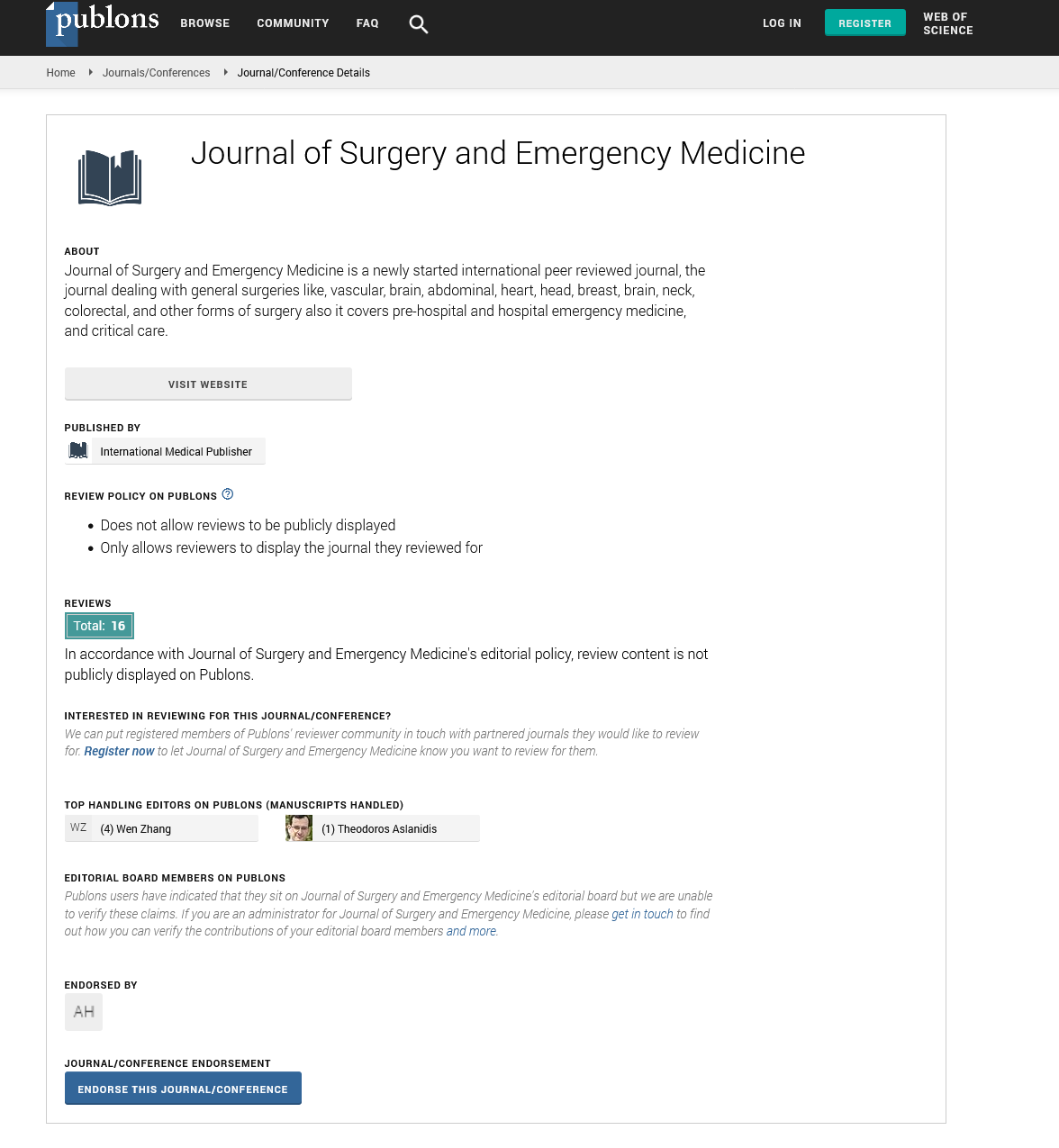Abstract
Diagnostic Accuracy of Wrist to Forearm Ratio of the Median Nerve on Ultrasound in Carpal Tunnel Syndrome: A Systematic Review and Meta-analysis
Background: Carpal tunnel syndrome is the most common smptomatic compressive neuropathy. Diagnosis is based on a combination of history, examination and nerve conduction studies. Due to a false negative rate of 16% to 34% alternative methods have been tested, including ultrasound. The cross-sectional area of the median nerve on ultrasound at the wrist has been the most evaluated method for diagnosis of carpal tunnel syndrome (CTS). Considering the variation among different ethnicities, the weight and age, wrist to forearm ratio has been proposed to use median nerve at the forearm as an internal control. Objective: The aim of this paper is to analyse the literature to date regarding the use of the ratio of the cross- sectional area of the median nerve on ultrasound at the level of forearm relative to the cross-sectional area at the wrist as a diagnostic tool for CTS compared with nerve conduction studies. Methods and Materials: For this meta-analysis four data bases were used including Pubmed, Embase, Scopus and Cochrane library. Utilising the following search terms: Carpal tunnel syndrome, median nerve, ultrasound or sonography or ultrasonography, diagnostic accuracy, wrist to forearm ratio (WFR), cross sectional area (CSA) and nerve conduction studies, Initially, 271 articles were selected from which 12 were included in this study. Results: This meta-analysis shows pooled sensitivity of 90% and 88%, specificity of 82% and 80%, positive likelihood ratio of 5.3 and 4.5, negative likelihood ratio of 0.12 and 0.15 diagnostic odds ratio of 45 and 30 as well as area under the curve of 0.93 and 0.9 for both CSA and WFR respectively. Conclusion: This meta-analysis shows that wrist to forearm ratio is reliable method of diagnosing carpal tunnel syndrome than nerve conduction studies.
Author(s): Mansoor Chaudhry, Ammara Sultana
Abstract | PDF
Share This Article
Google Scholar citation report
Citations : 131
Journal of Surgery and Emergency Medicine received 131 citations as per Google Scholar report
Journal of Surgery and Emergency Medicine peer review process verified at publons
Abstracted/Indexed in
- Google Scholar
- Publons
Open Access Journals
- Aquaculture & Veterinary Science
- Chemistry & Chemical Sciences
- Clinical Sciences
- Engineering
- General Science
- Genetics & Molecular Biology
- Health Care & Nursing
- Immunology & Microbiology
- Materials Science
- Mathematics & Physics
- Medical Sciences
- Neurology & Psychiatry
- Oncology & Cancer Science
- Pharmaceutical Sciences
